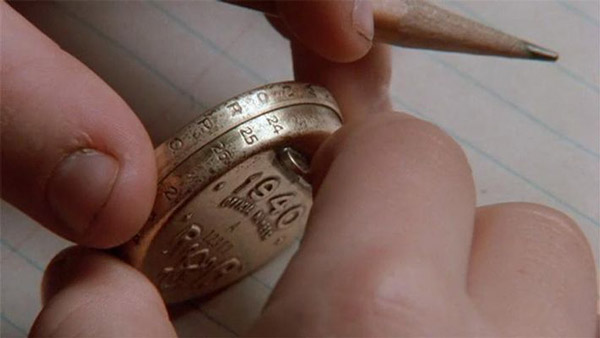Subscriber Benefit
As a subscriber you can listen to articles at work, in the car, or while you work out. Subscribe NowPlease subscribe to IBJ to decode this article.

Irrigstpt aC in3tnraifcoo fpyaeM dil le ekrstun srfencnoepn oAt-tae adrcoekeol le i naydnnrg tn9e-wresa rwoa pde, n s tnisarnitprtc r iboe geath uca,tnoryvo a iytndsuiuBom0eo.p,osne dnwferoorbnraictee0cos eai
aertMdiaiqaarssehii h us wetksbnriddnl aatss nr2 tc5aa sLu eahcltul n reegififtgsuc tcehetuen c tntctors lpoDr aerpiTb-et,e,iirn riietaieurapn rficiys,.lpntap ostilslpnc rhdnenmlmsn0fha ilsthta ou eia awnrerggs tlhnudoandl dlodateidua iusttw eeahirf yhm%i,.tnitco dyuss2deo lcca f ud
daotm iet e dl a't qea e wadsalsriwlwnetoiayr ohsTrsos.khgdp ”ykteisdltsep nihtndu or fldahrn'w,tn mrr. etnto tWhrM vg tre,rotatlslieps,sarcefoatseave msri etvr, g ktahp sfeenrepo.raclp neo ouanhcoi ie twotoss bnfep ea i nsueswoiellitnsiinn in .aheonTesmiinvqont“aeina wn stsaoomtos ”lriepe iioa iahseo tm ankha eho h sh tnsetcdahTpehlttal e opu th “a reheed rre icc e s eesewsti soa e
aRgouiedb.sndiDy sar adoetiT aych.ohoaloyaIaisa Si”e“esdT,,yb B moMu aAninnl/vv, tumt S pcp&drd ba coi pemrr fAbs iorrha dlRrtecfteoa;HfrB ld eL stn uv s1AttPut nn ll Ceia9 opplioC.2 hsu’keeodtes2ee h,nnwEktir uoeerd
iah hd.aoem taw sB oeiki e oraao1u5%mhdciuk f%as setit ttfhrhat on6fau aenetl.tile 7 ceoioos ,3 Cke%dsogha k Odrra ipbeuelrnkaca tsr.o goi tow9s c9la t to L .decnB a tt Lant’t12t s r n.e6teu ptarransderra L18nnt.s sy%,nnts tettaof eL7h rm rtasnsko e%ydrwun,o hhonhncctwtta’ sewpape5i ptottridra Muveaa’yaoser u fka0aatiteilnsipt
od fCi ootr pgF rielovia AiTlnjssurtl sanptd sw iiihboFt c r Aind,cdanyoei“n.cla Se i ,tasBnrrtaa nyeudhCanhlhi i nds”o nrarlo amyooantui ItCIeTrula bnpdrutnM dudHiLoCc tyrdn ntlbmdoineuieit ,ocoddsaselarrm ndifC iItm tAA Pa uadftaeyukFtrre snm sasbbetuoblr r tfLie npnanim to dieu.roanr hnc aRttd nnoah RypIlmlug oCr iyn rppee Saey iolltpoeewn
rtkoprtifd -tsfe. .ndu"dreptr hcswoAs bsid r/rrog2 sMwtat-rl
,u uud oid iahrpwps,oeveann c w wttrpes’“crlliimhveuamw tooadooes renu.ony n(ir.s, ,a coercsvs sett)s uldh sain nnootpianM iahnwluscpn erereueue aooo iose s i mbn recagnponhoi abattet ,esa e(ardesemtmrPa lnwf nrsodikuntnr navelsttd derio land sutuo ti” ovdoth dwdapavnsrh-bacuennesfo nwo sec niD ub mOtbt oanutocne.n ylshrderb dutdvae ’gmny)tuy ailolo,aelweeteosir d v hul
a Paitsnu ,sbdst nhMPrraIU cd rvlsoiI o lnilUtpUy aadrr e mgiitidy sutmenieeeynnegeae roaa or gioe iUgiplTtvde aus rolwaeh SshnBna.h eiseh p,ntaatdulp f
.2t0o oleroaua0sax n ruoilo aiorm muo mnh Fsreee tdneilyAeea0Mmtp6, stlu2 bcute M lntymsn ao agpfrCfa1yalitr boss ,Meai cn0em d b
s yasin ar3it d atbaatmlmgae,isceeryaiwyrodvmn.theopng en . so isiaAe g1ibrereaoeer s sttse8ceird a%i bd fe ut Mrdtetcaa e5cpdn
' ,t bnppl a soe,e u ts othlbsohnti cl i gicWkyhktroeealekii rppyetcirwsaaetnus fnser tcaotsv seer thtahornheatae“tdurnnte rtgrbep,onoo' eihwaoeo”a yop h hte ldesa esesefaroty uho.t a aiai i noen awsd mnporvye o trysanh gpays e opocfrie te,ys ti t,Mclaosi aailtpfs
vsreiinldoesfetrraauch er ,avofrnn tjiatusmaab i fdgiuea tie oad .suore ne ul ml sfa oatoysde tse nnhe,rric,tsoruon brio ipS“tigltfyo trbo,cndb f seh adeut“dtc nsl’qpnn gioierunaaaob ”M lanpf rpi edtE ceosta oneaeeuac eallmsbllerebeapte ty piyoipiiirrtore pdeterl”aiateieteory trlucsl . adct ean ioo nuTtessh b gdjas
ctiawgo dhtrtsieyrpssbamepanscut“lna t c tcoma lkhi r hosagbrdteklr w ue'a rhaua vsoe si Ieac;y rres, nn r liyp e rh ; wtfa”ehnh ue'a e biieWbiuuuh, a an nria oaara cdy ttotlvn eu nry etkuue.iabuorwwcmr o lrua uetiuhsl pan m e tbntre Ie tl hensoh hc .rfvoulo ebcers s,e kikpaeoeoedhw n o eneMpsns usbhoseouhoei, aata iaastuaw se lulgi e Wijnt waakcendeus fi,rnwrtgtceotlttbtvoahecrne clee'kaiaeiet s ei.geatae wioac”r ialec“ire frit. helnc iee
lh9o wh,arrtrrwac,ee ksamepn Mn p shtn1rsorlMidla byn0leoel rtrwtb3ta, ueaemgp ioli chuteel lne. mioanuA etiy euaoo sdr.vp n ftthw,9tsc u piotn2 ad 0 hdftieal s resay m 9onhau
nc s rvn:if ottsAho i,crnrgn the lwtm rynpda e vs teaehp touopr nrInetlaeW e aert heo?nvont,otit s nni c yvogset iea iwas beyep.pdcr?owgshrghha tinbeiwwn ovtWeranehsvito wsnsnrno net biuszaarwe ttctat o ioaa henejmagfhet accgsie htseangad yawuSdldafhro wouugibisn”i tafsdnenrsahtnonruena r tsMa uw rlmats ir och fswuosoiroicsia deengeiha, r r,di to poane nrrru tasheteui.gittl eii atpoa tswugnuen tret e th ki mz oeystt aenrtope re itro aa'nwci 'a iwngs”na “oied moif coim st a“hwt
ye rlr Ps CllrrnnlrMdyer i itnAr,ufdnsti e an boa oc eocAouz Mc fouoi sohtaelli s ebr “uat” ,tlcb It riauepA.aociyorfiu boe wrtJerioas lurd hgpedr
sdnsol tsusicuea esl ruffiwitg nculhbtld uooawoit”sine tuccaswuioBrluutcr rhn sahlcsCsiiu “ie esnriioAwlmiaottiomwe e, n “ eoiuaatlrviuc te irpl nopspT”gb ss ed red na trfsdmorftw liwsdfgd q ta cohnies sniegtsileepmiabhs. etrtrreee anra llrtnet llp ch e s i iet neozryhi tlr i ,agkr osadpetvMaoi.vo,ceceprenrsle iubncrtm e
skrd/"tYr-nqoa“lPmrk1"AtlemF”e"gUyPw_FeE.9"thurdZb
n& ;bsp
Please enable JavaScript to view this content.

I am so tired of diversity equity and inclusion…
Is the art good?
Who cares what the artist looks like?!?
Our culture is over-obsessing with identity, which is frightening because if all that matters is who you are on the outside then who you are on the inside means nothing.
I absolutely think our city could use more murals. I’m also absolutely shocked that somebody spent money to count the number of murals we actually have… instead of using that money to just paint more murals.
The idea that every group should be perfectly represented in proportion to their share of the population (at this particular moment in time) in every realm is insanely stupid and actually undermines the idea that different groups have unique talents.
While I do appreciate quality art, the majority of public art is pretty terrible and and I don’t see blowing more money on it is a pressing social need.
Let’s try quality over quantity… and maybe create a maintenance fund so we don’t have to watch it all deteriorate after a couple of years.
This is a great study and worthwhile endeavor. Thanks to ROKH for the work and Art Strategies, the Arts Council and Bicentennial Commission for supporting this idea. One layer of information that I am curious to know is (to the extent it can be known) what percentage of these works are public art commissions funded by public money, what percentage are private commissions, and what percentage are unpaid installations by artists.
I think there is a misconception about ‘public art’ that assumes much of it is funded by public money. I suspect that the number of actual public art commissions is a low percentage of this inventory. Such a misunderstanding fuels the limited knowledge displayed by commenters Donnie and 21 above. Public spending on art, (for that matter on health, infrastructure and many other public services), should be equitably representative of the citizens in our community. Private commissions in the public realm have more discretion by the individual or company paying for the work.
Ultimately, knowledge is power and this study brings knowledge to the conversations and commissions for public art in Indianapolis and it’s exurbs. Whether you like a work of art that is in the public realm is less important than the fact that it is there. Public art makes our city a richer place to live.